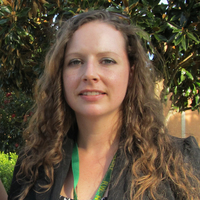Alan Haryaki - Profile on Academia.edu (original) (raw)

Related Authors
Uploads
Papers by Alan Haryaki
The four volumes of the Varia commensuración para la escultura y architectura (1585-87) of the Sp... more The four volumes of the Varia commensuración para la escultura y architectura (1585-87) of the Spanish silversmith and sculptor Juan de Arfe y Villafañe represent an extensive compilation of Italian art techniques of the Renaissance. The sources for the Libro segundo, which includes systematic explanations on the theory of proportions, the skeleton and musculature have yet to be discovered. Its didactic and illustrative structure is unique in the context of sixteenth-century literature. The general layout and some details of the illustrations of the first three chapters seem to be derived from the Windsor convolute of anatomical drawings by Leonardo da Vinci. Los cuatros libros de Varia commensuración para la escultura y architectura (1585-1587) del platero y escultor Juan de Arfe y Villafañe representan un extenso compendio de las teorías y técnicas del Renaci-miento italiano. Las fuentes del Libro segundo, que contiene explicaciones sistemáticas sobre la proporción de la figura humana, el esqueleto y la musculatura, aún no han sido descubiertas. La estructura didáctica y las ilustraciones son únicas en el contexto de la literatura del siglo XVI. El formato general y algunos detalles de las ilustraciones de los primeros tres capítulos parecen tener su origen en los dibujos anatómicos de Leonardo da Vinci conservados en el castillo de Windsor. Palabras clave: Dibujos anatómicos; Anatomía artística; Leonardo da Vinci; Juan Arfe y Villafañe; Literatura didáctica del Renacimiento. In the late sixteenth century, one of the most advanced manuals on art didactics in Europe was the Varia commensuración para la Esculptura y Architectura (1585-1587) by the Spanish silver and goldsmith, artisan and sculptor Juan de Arfe y Villafañe 1. The Varia is divided into four books. The first book deals with geometry 2 , whereas the second explains the proportions and 1 Arpe y VillAfAne, 1585, 1587. 2 Libro primero, trata de las figuras Geometricas y cuerpos regulares è irregulares, con los cortes de sus laminas […] 1585.
The four volumes of the Varia commensuración para la escultura y architectura (1585-87) of the Sp... more The four volumes of the Varia commensuración para la escultura y architectura (1585-87) of the Spanish silversmith and sculptor Juan de Arfe y Villafañe represent an extensive compilation of Italian art techniques of the Renaissance. The sources for the Libro segundo, which includes systematic explanations on the theory of proportions, the skeleton and musculature have yet to be discovered. Its didactic and illustrative structure is unique in the context of sixteenth-century literature. The general layout and some details of the illustrations of the first three chapters seem to be derived from the Windsor convolute of anatomical drawings by Leonardo da Vinci. Los cuatros libros de Varia commensuración para la escultura y architectura (1585-1587) del platero y escultor Juan de Arfe y Villafañe representan un extenso compendio de las teorías y técnicas del Renaci-miento italiano. Las fuentes del Libro segundo, que contiene explicaciones sistemáticas sobre la proporción de la figura humana, el esqueleto y la musculatura, aún no han sido descubiertas. La estructura didáctica y las ilustraciones son únicas en el contexto de la literatura del siglo XVI. El formato general y algunos detalles de las ilustraciones de los primeros tres capítulos parecen tener su origen en los dibujos anatómicos de Leonardo da Vinci conservados en el castillo de Windsor. Palabras clave: Dibujos anatómicos; Anatomía artística; Leonardo da Vinci; Juan Arfe y Villafañe; Literatura didáctica del Renacimiento. In the late sixteenth century, one of the most advanced manuals on art didactics in Europe was the Varia commensuración para la Esculptura y Architectura (1585-1587) by the Spanish silver and goldsmith, artisan and sculptor Juan de Arfe y Villafañe 1. The Varia is divided into four books. The first book deals with geometry 2 , whereas the second explains the proportions and 1 Arpe y VillAfAne, 1585, 1587. 2 Libro primero, trata de las figuras Geometricas y cuerpos regulares è irregulares, con los cortes de sus laminas […] 1585.







